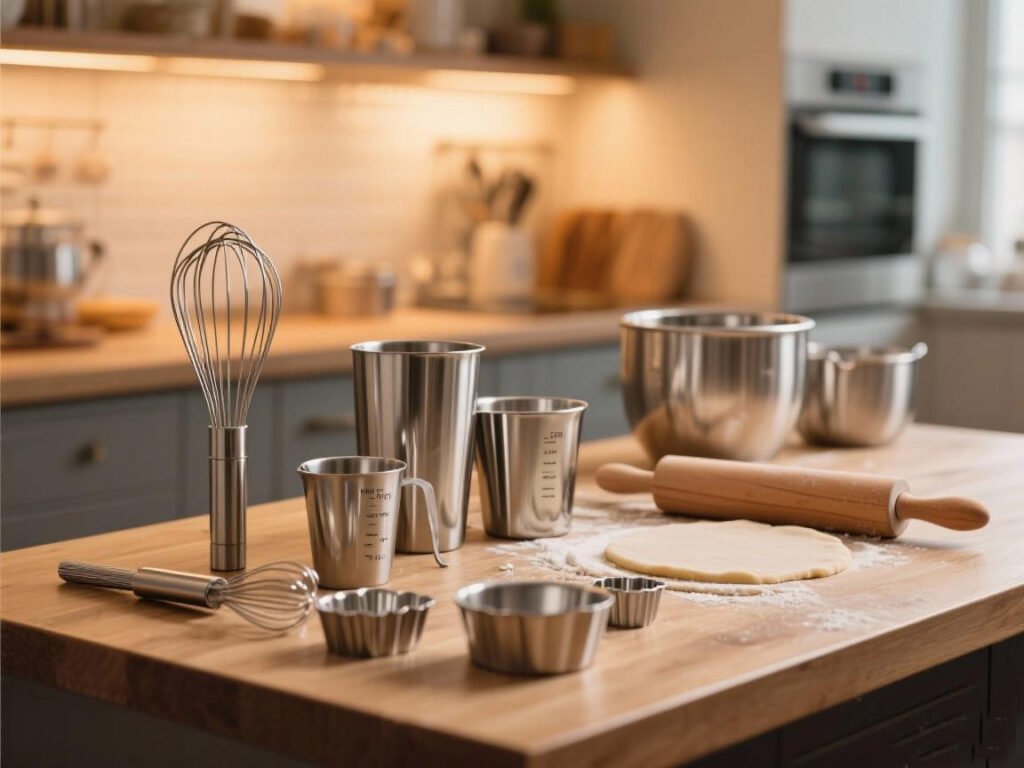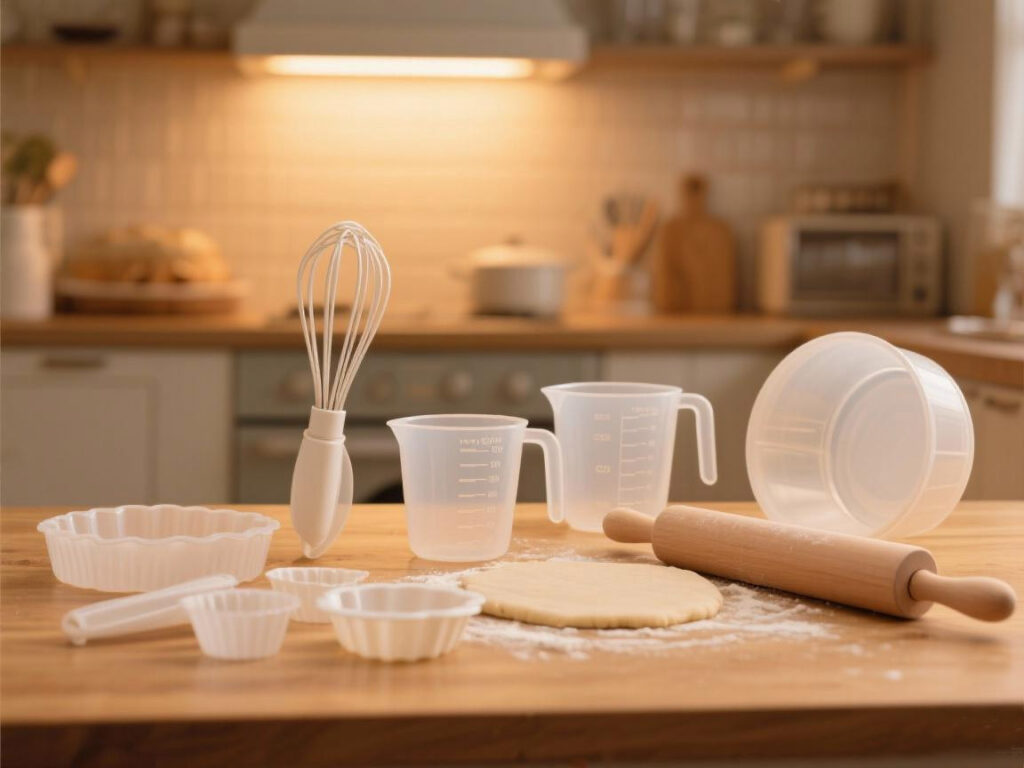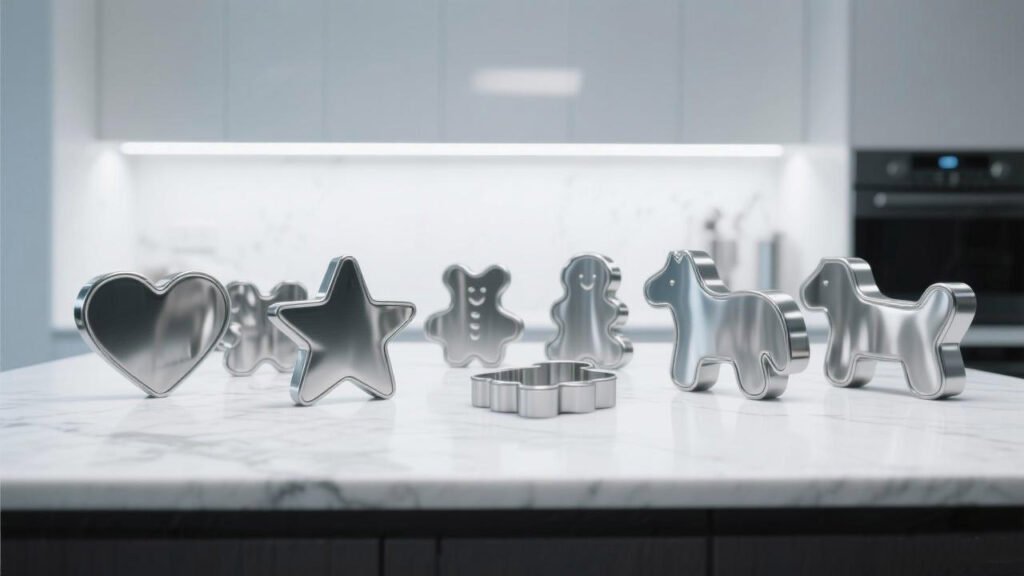The global bakeware market keeps growing because customers care most about safety, durability, and consistent performance. Wholesalers, importers, and distributors have to choose between stainless steel and plastic bakeware, which has a direct effect on profits, customer pleasure, and brand positioning. This guide will help you compare properties, performance, safety, demand, costs, and logistics. You can also get custom quotes and OEM/ODM support from Inoxicon.


Material Properties Deep Dive
| Attribute | Stainless Steel Bakeware | Plastic/Silicone Bakeware |
|---|---|---|
| Typical Materials / Grades | 304 (18/8) for corrosion resistance; 430 for magnetic/induction; 316 with Mo for harsh environments | Food-grade silicone; polypropylene (PP) and related plastics |
| Temperature Range | Stable from sub-zero to high oven temps; suitable for commercial baking and broiling | Generally up to ~220°C (428°F); not ideal for very high heat |
| Heat Distribution | Even heat conduction and browning; supports consistent results batch after batch | Lower thermal conductivity; may result in cooler spots and softer crusts |
| Surface & Reactivity | Non-reactive, non-porous; resists flavor transfer and staining; easy to sanitize | Softer surface; can absorb oils/odors; potential discoloration over time |
| Durability & Service Life | High dent/scratch resistance; typical service life 15–20 years with proper care | Prone to abrasion and deformation; shorter lifecycle in high-volume kitchens |
| Food-Contact Compliance | Naturally compliant with FDA/EU when using certified grades; traceable sourcing | Requires strict vetting for heat stability and potential leaching; certification-dependent |
| Weight & Handling | Heavier; robust feel; stacks densely and tolerates rough handling | Lightweight; easier to carry; may warp if stored under load or heat |
| Sustainability | Highly recyclable; long lifespan lowers replacement frequency | Lightweight reduces freight emissions; end-of-life recycling varies by region |
| Best Use Cases | Commercial bakeries, restaurants, institutional kitchens, premium retail | Entry-price retail, novelty/intricate molds, low-weight merchandising |
Performance and Safety
Professional buyers prioritize repeatable results, sanitation, and resilience. In blind tests across bakeries and culinary schools, metal pans continue to deliver faster heat-up and more uniform browning compared with flexible molds. For high-volume operations, this consistency translates into fewer rejects and tighter bake windows—key to labor efficiency.
- Baking consistency: Stainless steel supports even Maillard reaction and crisp edges on breads, cookies, and sheet cakes, reducing mid-shelf underbake risk.
- Thermal shock: Steel tolerates rapid temperature changes better than most plastics, minimizing warping during wash-to-oven cycles.
- Sanitation: Non-porous steel is easier to scrub and sanitize; it resists oil absorption, reducing off-flavors and cross-contamination in allergen-sensitive prep rooms.
- Safety compliance: Stainless steel grades 304/316 are widely recognized under FDA 21 CFR and EU food-contact frameworks when properly certified. Plastics can be safe, but require tighter supplier documentation and process control to prevent filler migration at high heat.
Market Demand and Trends
Demand patterns differ by channel, and aligning your portfolio to those nuances is crucial for turns and GMROI.
- Foodservice and institutional buyers continue to favor metal bakeware for durability and speed. Replacement cycles are longer but orders are larger and recurring.
- E-commerce and specialty retail are trading up: Shoppers respond to premium finishes, rolled rims, and lifetime-value messaging, supporting higher price points.
- Silicone remains popular in niche categories—intricate molds, novelty shapes, and non-stick convenience—especially for gifting and seasonal promotions.
- Sustainability premium: Retailers increasingly prefer durable, recyclable products. Stainless steel’s recyclability and long service life align with ESG scorecards and procurement tenders.
Wholesale Economics: Price, Margin, and Total Cost of Ownership

Unit cost does not equal cost to serve. Consider the full lifecycle and operational impact.
Cost and Margin Structure
- Upfront vs lifecycle: Stainless typically carries higher ex-works pricing than plastics, but it reduces returns, breakage, and replacements—lowering total cost of ownership.
- Price positioning: Premium stainless lines can carry 2–3x retail uplift vs entry-price silicone, unlocking margin while reinforcing brand quality.
- Return rates: Durable SKUs reduce damage-in-transit claims and post-purchase returns, stabilizing margin for marketplaces and big-box partners.
Operations and Labor
Cleaning cycles: Stainless tolerates aggressive cleaners and dishwashers; plastics may require gentler cycles and earlier replacement.
Turn speed: Faster heat-up and consistent bakes increase batch throughput—valuable for commissaries and bakeries with tight labor windows.
Cost and Margin
- Upfront vs lifecycle: Stainless may cost more initially but wins on total cost of ownership via durability and fewer returns.
- Price positioning: Premium stainless lines support 2–3x higher retail price points and stronger margins in specialty channels.
Logistics and Inventory
- Freight math: Plastics save weight; stainless delivers better value-to-weight in premium shipments and suffers less transport damage.
- Warehousing: Stainless stacks densely and tolerates variable conditions; plastics may warp and need gentler storage.
Product Portfolio Planning: What to Stock and Why
A balanced assortment captures both professional and consumer demand while protecting margins.
- Core stainless SKUs: Sheet pans (half/quarter), cake pans, loaf pans, muffin trays, roasting pans with racks—offered in 304 stainless with reinforced rims.
- Selective silicone adds: Muffin cups, novelty molds, and flexible trays for seasonal retail promotions or bake-and-release convenience.
- Good-better-best ladder: Entry stainless (430) for budget buyers, core 304 for mainstream, and heavy-gauge 304/316 with mirror finish for premium channels.
- Retail packaging: Window boxes and hang tags with clear size, temperature ratings, and care icons to simplify shopper choice and reduce returns.
Inoxicon Advantages for B2B Buyers
- Material excellence: Food-grade 304/316 stainless, traceable mills, REACH/RoHS/FDA-aligned documentation.
- Manufacturing quality: Precision forming, reinforced rims, seamless corners, mirror/satin finishes, and tight flatness tolerances.
- Performance testing: Warp tests after thermal cycling, salt-spray for corrosion checks, and surface roughness verification for easy release and cleaning.
- OEM/ODM capability: Private labeling, custom gauges, dimensions, multi-cavity tooling, and retail-ready packaging with your brand assets.
- Flexible scale: MOQs from 500–1,000 units per SKU; pilot runs for market testing; mixed-SKU pallets to accelerate store sets.
- On-time delivery: 25–40 day standard lead time; 45–60 days for new tooling; consolidated containers for reduced logistics cost.
Ordering and Shipping
- MOQ: Typically 500–5,000 units per SKU. Mixed cartons available for channel tests and e-commerce bundles.
- Lead time: 25–40 days for standard SKUs; 45–60 days for OEM molds/packaging or new certifications.
- Trade terms: EXW, FOB, CIF. Full support with HS codes and import documentation to minimize clearance delays.
- Samples: Ready in 7–10 days; sample fees are deductible against bulk orders.
- Logistics: Sea, rail, or air freight; protective packaging and palletization designed to minimize in-transit damage.
FAQ for Wholesale Buyers
Answers to the most common sourcing questions to speed up your decision-making.
Q: Which stainless steel grade should I choose?
A: 304 is the mainstream choice for food-contact safety and corrosion resistance. Use 430 for magnetic bases or where cost targets are strict. 316 is preferred for harsh, saline, or high-acid environments.
Q: Do I need non-stick coatings on stainless?
A: Many commercial kitchens prefer uncoated stainless for longevity and dishwasher use. For consumer retail, we can offer PTFE- or ceramic-type coatings where permissible; we’ll align with your market’s compliance requirements.
Q: How do I reduce freight costs on stainless?
A: Optimize carton nesting, use mixed pallets, and ship via sea in consolidated containers. Our team can propose cube-efficient packaging to improve landed cost per unit.
Q: Can you provide documentation for major retailers?
A: Yes. We supply barcodes, packaging specs, carton tests, material declarations, and audit support to meet onboarding checklists for big-box and marketplace partners.
Q: What about ESG and recycling claims?
A: Stainless steel is widely recyclable and long-lived. We provide material origin information and guidance for accurate sustainability messaging in your catalogs.
Quick Recommendations
- Restaurants, bakeries, institutions: Prioritize stainless steel for consistency, safety, and long service life—lower total cost and fewer returns.
- Entry-price retail or novelty molds: Add silicone/plastic SKUs for flexible shapes and impulse-friendly price points.
- Balanced portfolio: Lead with stainless as the flagship; deploy plastics for complementary SKUs aligned to seasonal and gifting peaks.
Why Partner with Inoxicon Now
Market calendars are compressed, and retailers are planning assortments earlier. By locking specs and packaging now, you can secure production slots and stable pricing ahead of seasonal demand. Inoxicon’s combination of compliant materials, tight process control, and flexible MOQs ensures your line launches on time and performs on shelf and in the kitchen.
Are you ready to make a successful line of bakeware? Ask Inoxicon for a personalized quote, samples, and a schedule for when the work will be done. You can email info@inoxiconkitchen.com or go to inoxiconkitchen.com. Let’s make sure that the specs, packaging, and delivery windows fit with your market plan.